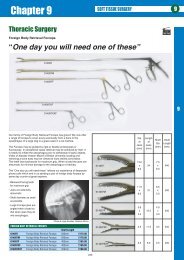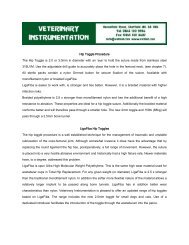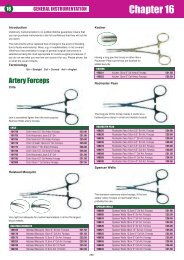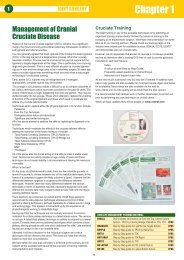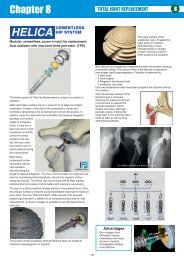Cardell MAX-12 HD - Veterinary Instrumentation
Cardell MAX-12 HD - Veterinary Instrumentation
Cardell MAX-12 HD - Veterinary Instrumentation
You also want an ePaper? Increase the reach of your titles
YUMPU automatically turns print PDFs into web optimized ePapers that Google loves.
<strong>Cardell</strong>® <strong>MAX</strong>-<strong>12</strong><strong>HD</strong> User’s ManualAPPENDIX 3 DEAD SPACE - Cause, Effect, & Controlin Small Animal AnesthesiaRobert M. Stein, D.V.M.. DAAPMFounder www.VASG.orgDead space is an often misunderstood and overlooked aspect of veterinary anesthesiapatient management. Dead space is always present as a component of the patient’sairway and, to a variable degree, as a component of the anesthetic system. Ignoring theharmful consequences of system dead space can lead to potentially fatal patientoutcomes. This is especially worrisome when managing small patients.There are three different types of dead space: anatomic, alveolar, and mechanical(equipment). Dead space ventilation involves that component of the respiratory gasesthat does not participate in gas exchange. Simply said, there is no patient benefit fromdead space ventilation. If mechanical dead space volume equals or exceeds alveolarventilation volume the patient will not be able to clear carbon dioxide at all. Ideally, yourgoal should be to minimize dead space through proper patient planning and to detectexcess dead space consequences through end-tidal CO2 monitoring.Anatomic dead space is comprised of the upper airway structures that do not participatein gas exchange. This includes the gases in the nasal passages, nasopharynx, larynx,trachea, and in the larger airways. Alveolar dead space represents those alveoli that areventilated with fresh gas but not perfused by the pulmonary circulation. Mechanical orequipment dead space is made up of any portion of the endotracheal tube extendingbeyond the patient’s incisors, patient monitor adaptors (ETCO2, apnea alert, etc.), anyadaptors used to facilitate patient/system positioning (right-angle or swivel adaptors usedto reduce the risk of tracheal trauma during patient rotation), the pace within a mask notoccupied by the patient’s nose, humidification management exchangers (HME), and the“Y” piece (defined as the terminal end of an F circuit or noncircle system and theinhalation/exhalation hose connector in a circle system).Exhausted soda lime or malfunctioning one-way valves can also contribute to increasingmechanical dead space. Dead space also increases in a non-rebreathing system whenfresh gas flows are inadequate or when certain defects are present in the system (forinstance, when the center tube of a Bain system or F circuit is cracked or broken). Thesedead space contributors can all be controlled through proper system inspection andmaintenance.<strong>12</strong>0 M1.0 5-15-09



